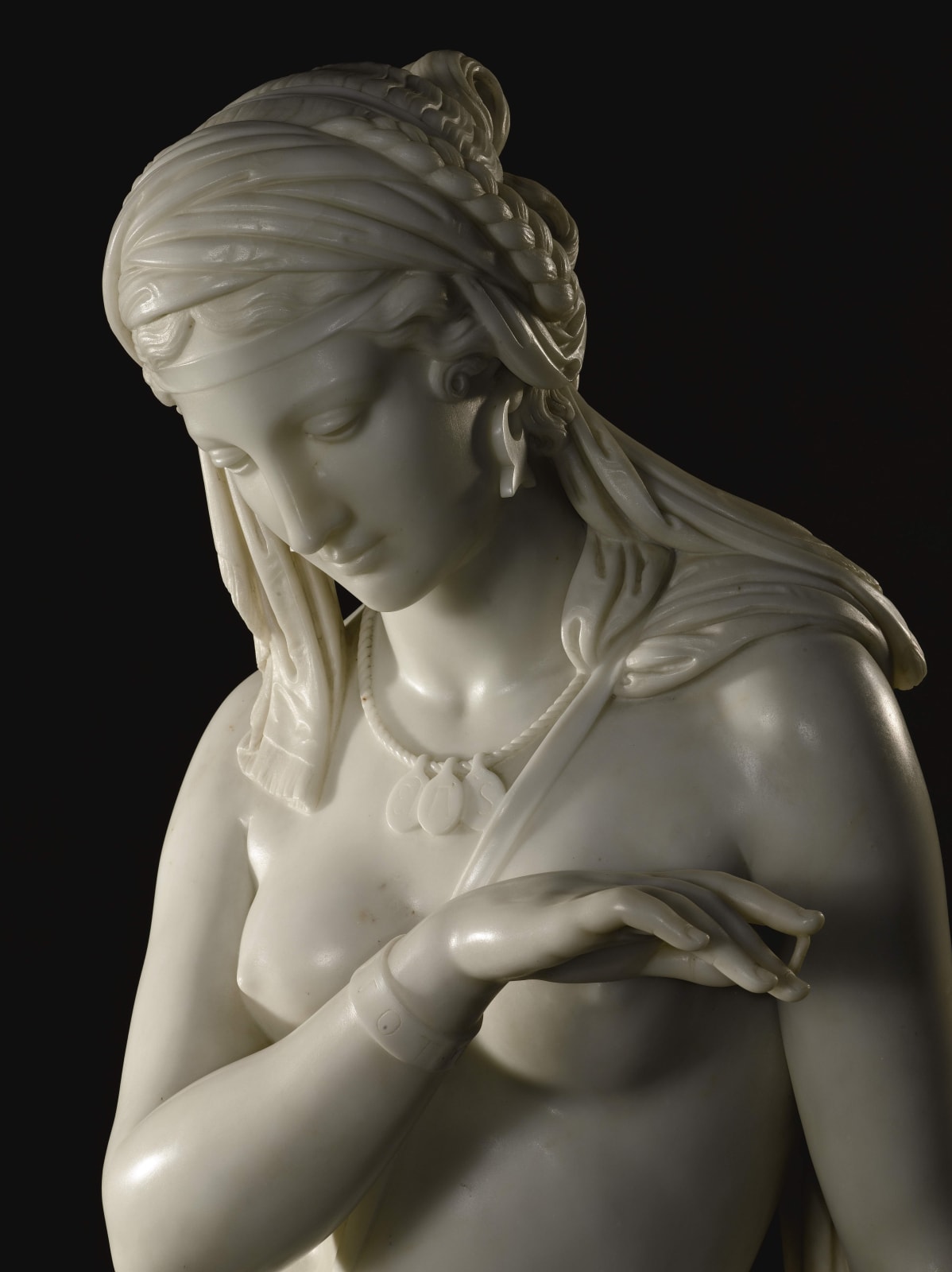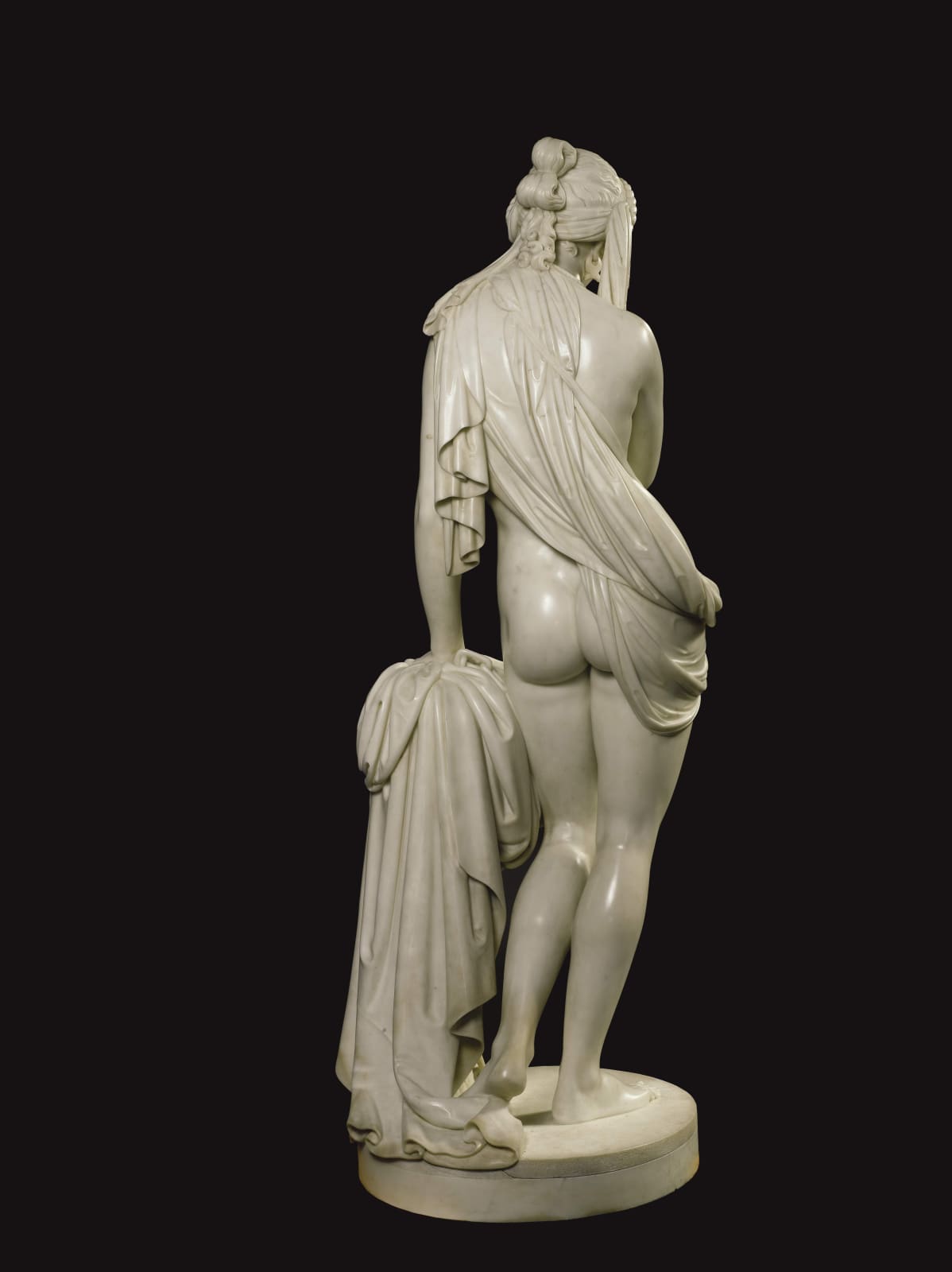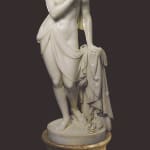Scipione Tadolini
Further images
Literature
Alfonso Panzetta, "Dizionario Degli Scultori Italiani Dell'Ottocento e del Primo Novecento", 1994, p. 187, pl. 776, illustrating a similar version of the model, in a private collection.
An extremely fine and beautiful Classical white Carrara marble statue of The Greek Slave or La Schiava Greca by Scipione Tadolini
portraying a life size figure of a female slave wearing a necklace inscribed in Greek elpis (hope) and on her bracelet pistotes (fidelity), a turban headdress and drapery around one shoulder continuing across her back and loins and falling over a pedestal under which are chains, the figure standing on a circular base on a later rosso marble pedestal
Rome, dated 1860
Height of figure 165 cm, height of pedestal 52 cm.
Born in Rome into a celebrated family of sculptors, Scipione Tadolini (1822-93) was destined for greatness having inherited his skills from both parents. His mother was the miniaturist Serafina Passamonti Tadolini while his father was Adamo Tadolini (1788-1868) who was one of Canova's main studio assistants responsible for producing working models for many of the Neo-classical master's most important works. Canova, who recognising Adamo's skill helped him establish his own studio on the corner of the Via del Babuino, where later Adamo trained and continued to work closely with Scipione as well another of his sons Tito (1825-1900).
In turn Scipone's own son Giulio (1849-1918) continued the workshop as did his son Enrico (b.1884/8). For one and a half centuries four generations of the Tadolini were to work in that studio which finally closed in the 1960's and is now home to the Canova-Tadolini Museum, where one can admire the work of Canova as well as the Tadolini family. Scipione acquired control of the studio on his father's death and soon established his name as one of the leading Rome sculptors. He was overwhelmed with commissions, including a marble for the church of Gonfalone in Rome, an equestrian of Bolivar for Lima, a St. Michael for a wealthy Bostonian and the very important bust of King Vittorio Emanuele I. Pope Pius IX and the Queen of Italy were among many notable figures who visited his studio.
Although Scipione was born the year of Canova's death, his style, exemplified by this celebrated model, continued the legacy of the Venetian born master into the later years of the nineteenth century. While working in the Neo-classical tradition, his works possess a lyricism and romantic vein as demonstrated by the sensual modelling of the female slave, which in combination with the finely carved details look back to Canova's own Venuses. The Greek Slave portrays a subject which probably originated from a marble of the same title by the American sculptor Hiram Powers (1805-73), which was carved in Florence 1844 and toured Europe and America.
Tadolini's subject, like Powers' was inspired by the Greek War of Independence, which also fired the imagination of many of the nineteenth century Romanticists, from Byron to Delacroix. However unlike Powers, Tadolini's captive beauty wears drapery which has the effect of enhancing the natural rhythms of her female form. Despite the chains that are hidden beneath the drapery, the Grecian slave has hope as inscribed elpis on her necklace as well as fidelity as inscribed pistotes on her bracelet.





